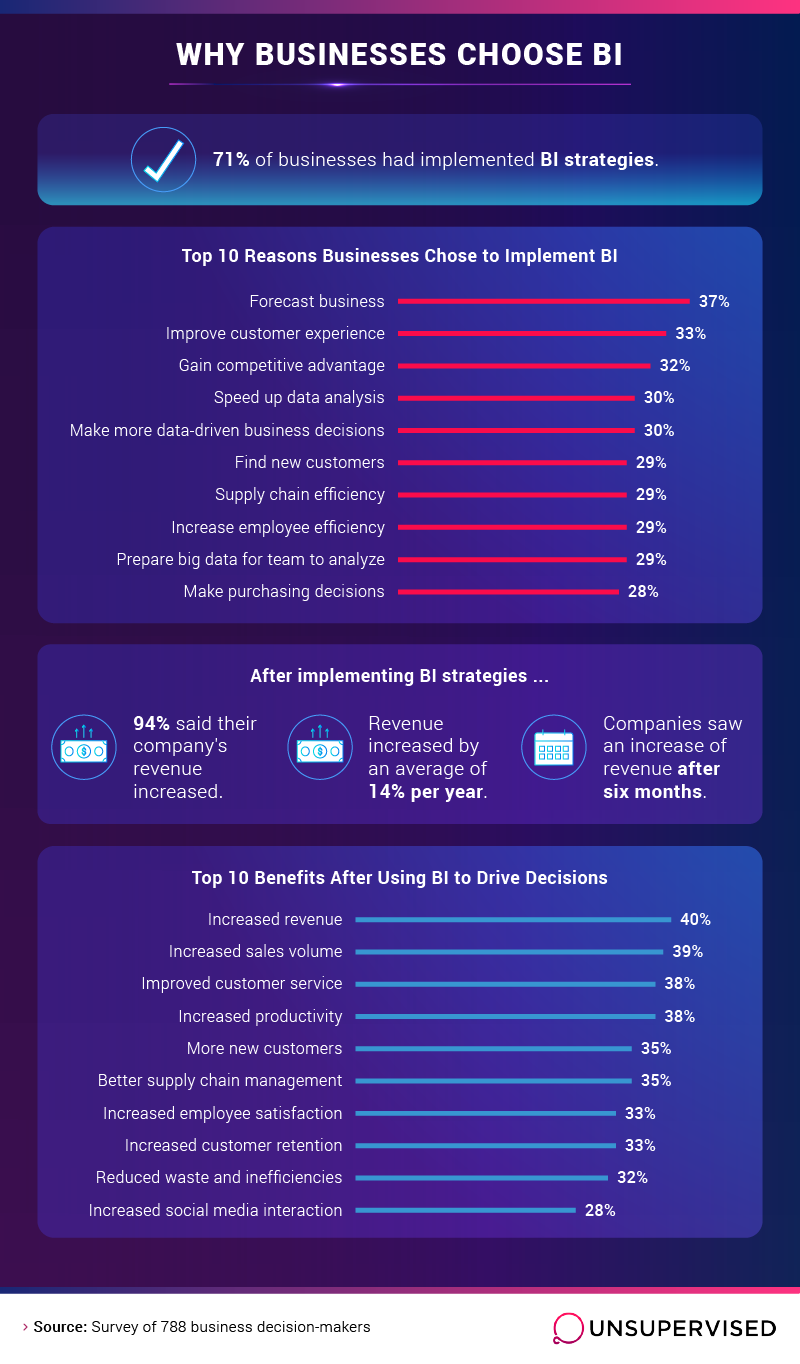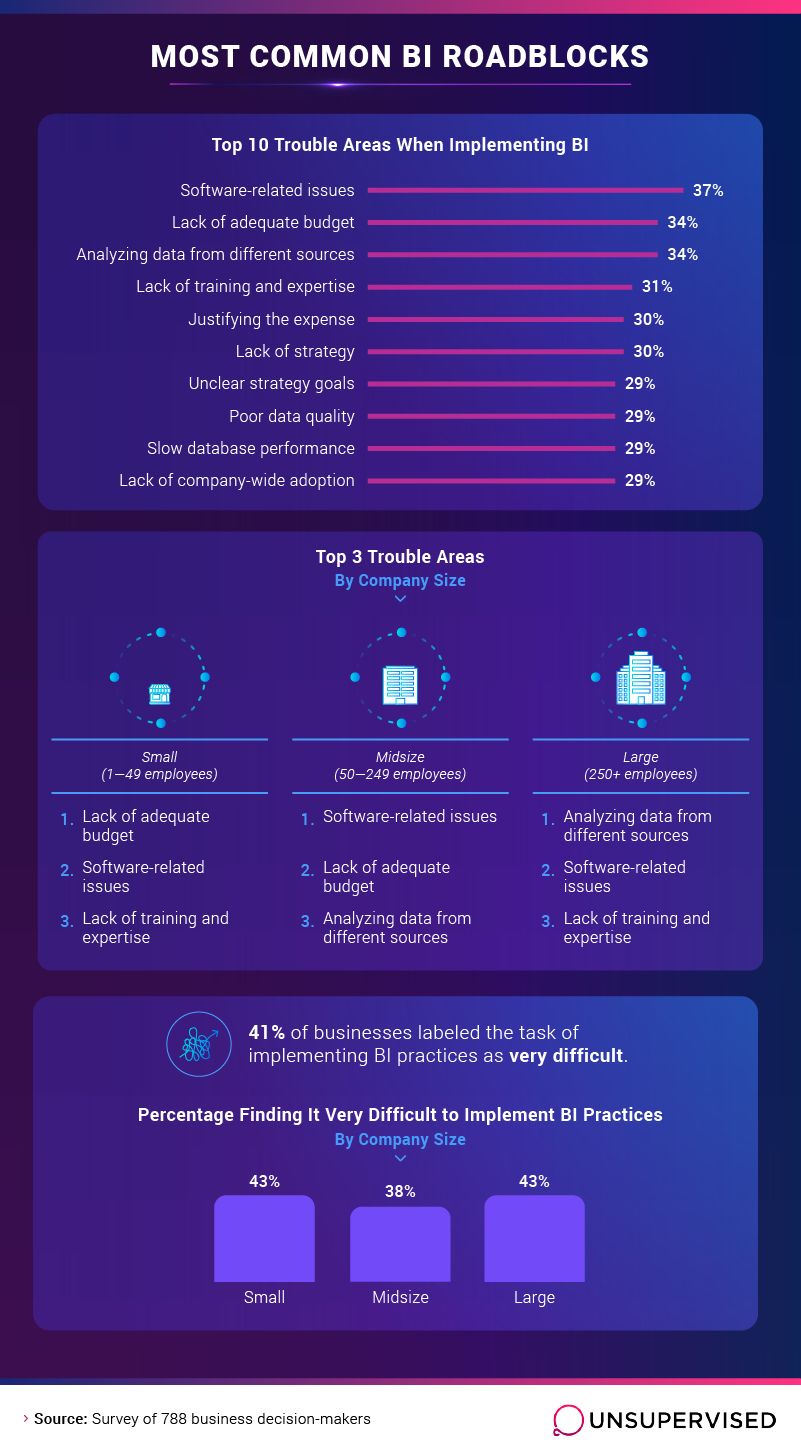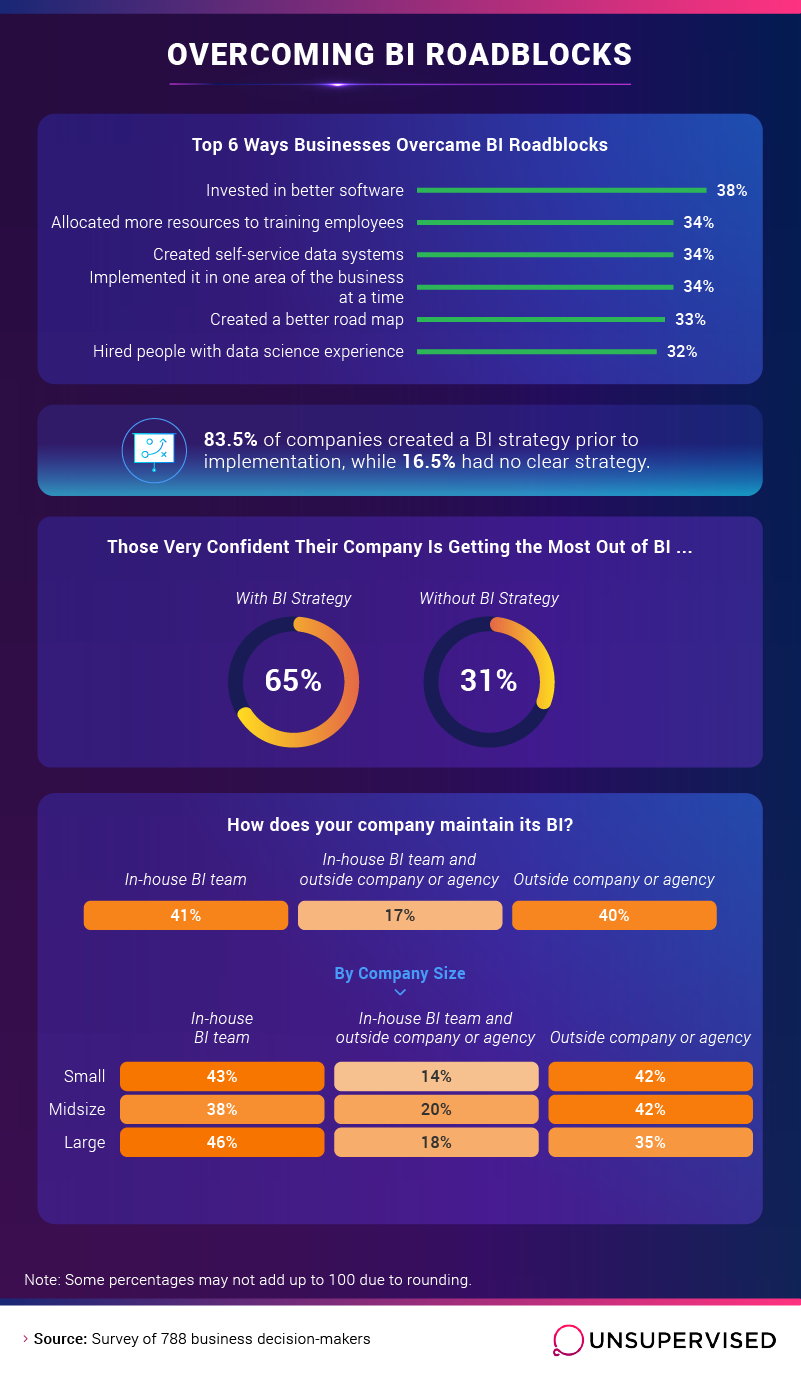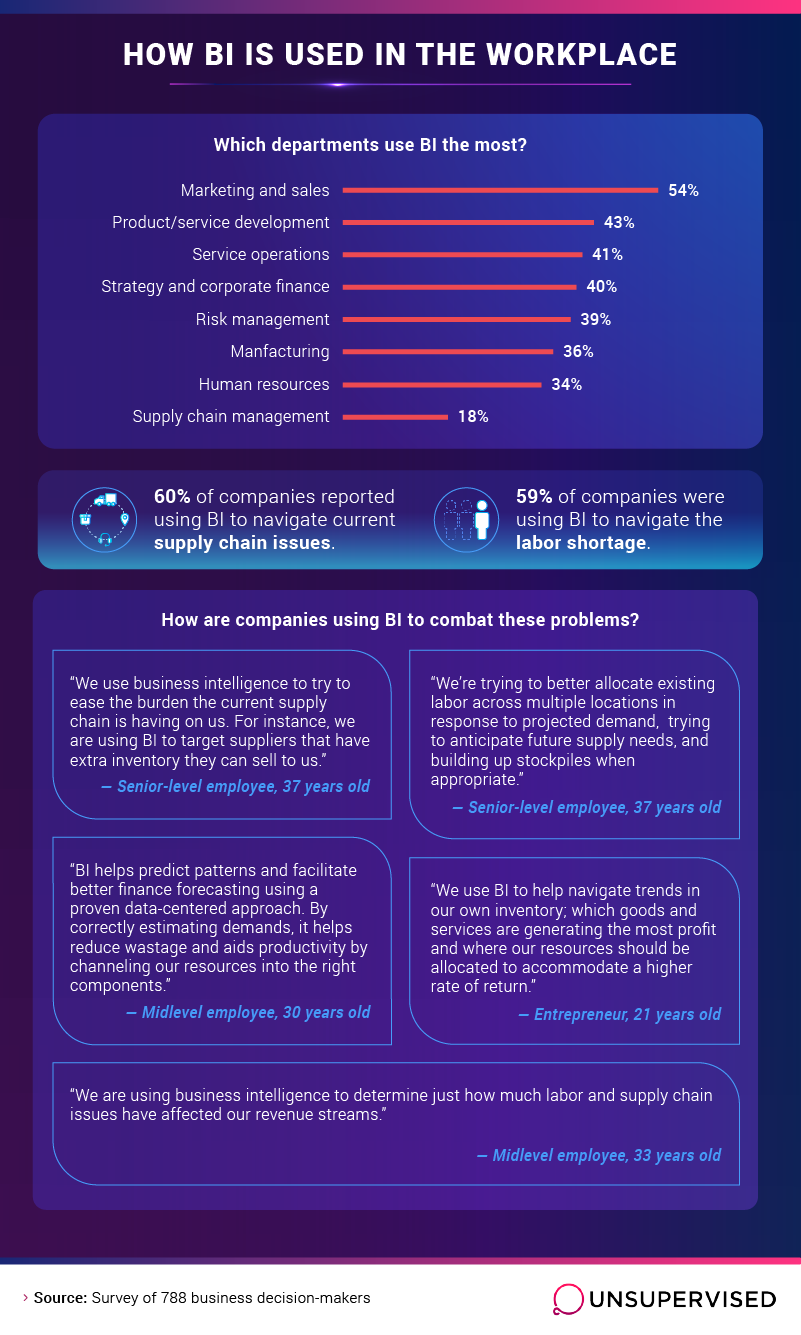
How are Businesses Overcoming Business Intelligence (BI) Bottlenecks?
Key Findings
- Annual revenue increased by an average of 14% after implementing BI strategies.
- Software-related issues and a lack of adequate budget were the most common roadblocks to implementing BI.
- Forty-one percent of businesses found the task of implementing BI very difficult.
- Sixty percent of companies were using BI to navigate supply chain issues.
Business intelligence is often an important aspect of running a business, regardless of size; it’s the practice of combining data mining and visualization, analytics, data infrastructure, and best practices to drive the decision-making process. Implementing better business intelligence isn’t always a smooth process, but there are steps you can take to accomplish it.
That said, we wanted to get an idea of some of the roadblocks and bottlenecks that businesses face when it comes to implementing better business intelligence, so we asked owners and decision-makers to weigh in on why they use BI, the most common roadblocks they experience, and more.
Why Use BI?
Businesses of different sizes often have different reasons for implementing business intelligence. Among midsize businesses, the top four reasons for using BI were business forecasting, increasing efficiency in the supply chain, increasing customer efficiency, and improving customer service.

Overall, 71% of businesses surveyed had implemented BI. On average, they saw a 14% annual revenue increase because of it. Revenue increase can happen as a result of many factors related to the implementation of business intelligence, including increased sales volume (39%), improved customer service (38%), and increased productivity (38%).
Roadblocks of Business Intelligence
It goes without saying that bottlenecks and roadblocks often present themselves when implementing business intelligence technology, ranging from issues with software to a lack of budget. The latter was shown to be especially true for small and midsize businesses, many of which don’t have the same access to funds as larger companies when it comes to implementing effective BI strategies.

Among midsize businesses, the top three most common roadblocks were software-related issues, a lack of adequate budget, and analyzing data from different sources. The results were similar for small businesses, although a lack of training and expertise was also a prominent issue for respondents in this category. Not having an adequate budget to support BI isn’t entirely surprising, given that studies have found that lack of funding holds small and midsize businesses back across the board, preventing them from certain opportunities often presented to larger enterprises.
Getting Around the Roadblocks
Making your way past the roadblocks and bottlenecks that present themselves during BI implementation may seem challenging at times, as is the case with almost every aspect of business. But just as there are ways to avoid or get over these issues in general, businesses can make small but meaningful investments and efforts to avoid and/or solve BI-related problems.

For midsize businesses, the top three ways to overcome BI roadblocks included investing in better software, creating self-service data systems, and allocating more resources for training employees. Broadly, among businesses of all sizes where owners participated in the study, these reasons were by far the most common. Thirty-eight percent of all respondents said investing in better software was an effective way to overcome roadblocks, while 34% said the same for allocating training resources and creating self-service data systems.
When it came to maintaining BI, the majority of all respondents said that they had an in-house BI team (41%). However, among midsize businesses specifically, the most common way of maintaining BI was to outsource to an outside company or agency (42%).
Who’s Using BI?
There are plenty of examples of business intelligence at work, but, of course, businesses use it for different reasons depending on a number of factors. Overall, 60% of the companies surveyed were using BI to counteract current supply chain issues, while 59% were using it to tackle labor shortages.

While many companies are using BI to help deal with labor shortage and supply chain issues, some companies are using BI to protect themselves from these issues in the first place. One entrepreneur told us, “We are staying on top of our existing stock and production, and the business intelligence data helps us stay ahead of the curve. So we have not experienced any supply chain issues as of yet. Hopefully we don’t, either.”
Overall: BI in Business
Business intelligence can be an effective way for businesses of all sizes to grow and solve problems, but there are many issues that can present themselves during the implementation process. For small and midsize businesses, a lack of budget can be a major challenge when it comes to BI. However, it is encouraging to see that many companies have found ways around these problems in order to implement and maintain BI practices, such as outsourcing BI to an outside company or agency. With the 14% increase in revenue, it is no surprise that 71% of businesses have implemented BI strategies. With over half of companies using BI to deal with supply chain and/or labor shortage issues, it is clear: BI is solving business problems—if businesses are able to use it!
Methodology and Limitations
We used Amazon Mechanical Turk and Prolific to collect 788 responses from employed people in the United States. 42% were entrepreneurs and business owners, 1.3% were executives, 19.5% were managers, 12.8% were senior-level employees, and 24.4% were midlevel employees. Of these, 16% came from large companies (250+ employees), 32.1% were from midsize companies (50–249 employees) and 51.9% came from small companies (1–49 employees). 56.2% of our participants identified as men, 42.5% identified as women, and roughly 1.3% identified as nonbinary or nonconforming. Participants ranged in age from 18 to 77 years old with a mean of 36.3. Those who reported no current employment or who failed an attention-check question were disqualified.
The data we are presenting rely on self-report. There are many issues with self-reported data. These issues include, but are not limited to, the following: selective memory, telescoping, attribution, and exaggeration.
Fair Use Statement
For those weighing the benefits and challenges of business intelligence, our study will hopefully provide insight that you are welcome to share. We just ask that you link back to the study and that your purposes are noncommercial in nature.








